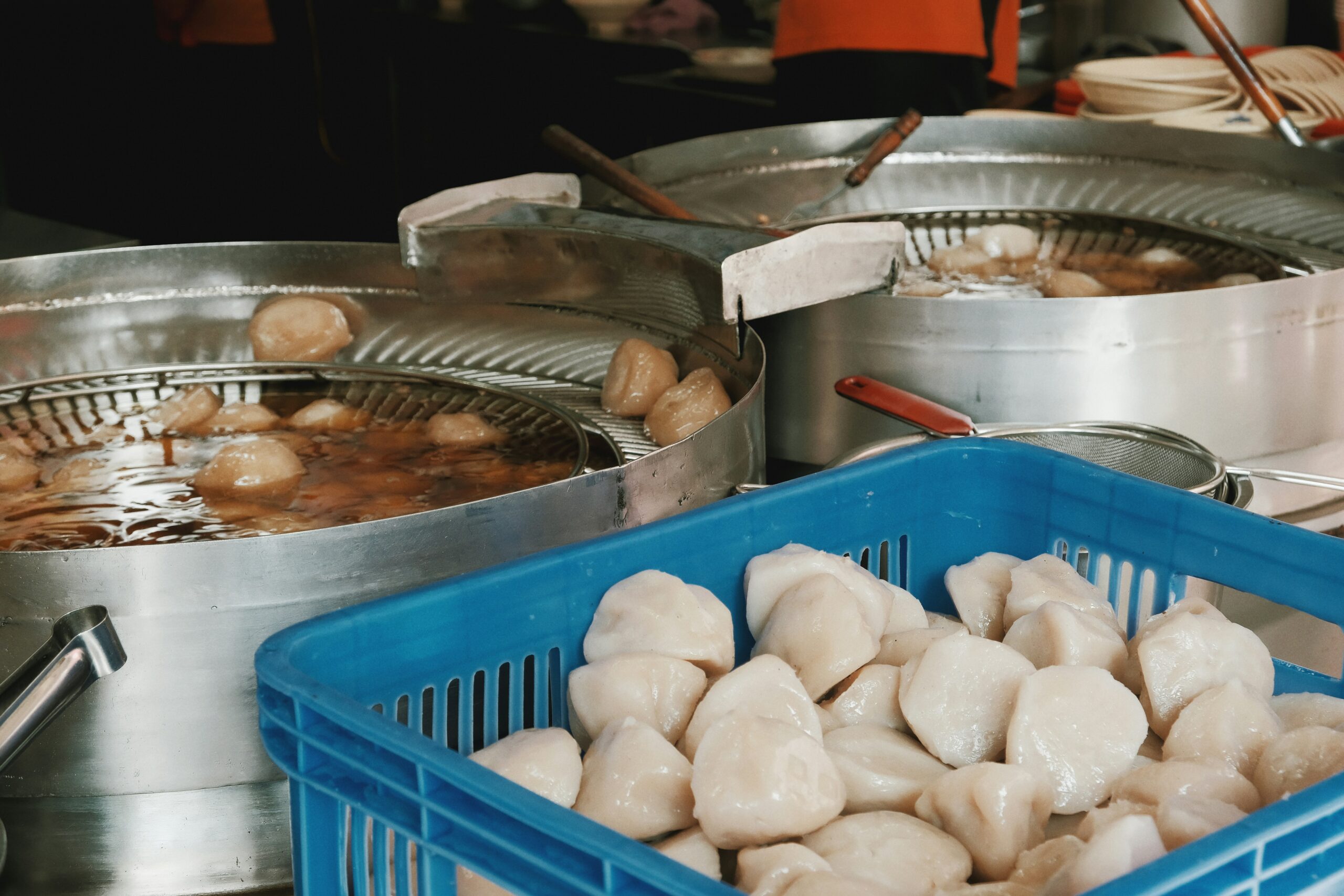Unlock the Flavor Profiles That Will Transform Your Everyday Dishes into Gourmet Creations
Everyday cooking can sometimes feel like a mundane chore. You know the routine: the same ingredients, the same methods, the same results. But what if I told you that the secret to transforming your meals from ho-hum to haute cuisine lies in understanding and mastering flavor profiles? That’s right! With just a tweak here and a twist there, your humble pasta can take on the allure of an upscale bistro dish, and your chicken can strut around like it just stepped off the pages of a gourmet magazine.
The Magic of Flavor Profiles
At the heart of culinary artistry is the concept of flavor profiles. Think of these as the building blocks of taste that dictate how different ingredients interact with one another. Flavor profiles can vary from sweet and savory to spicy and tangy, and understanding them can elevate your everyday dishes into something truly special. But how do you begin to unlock these profiles? Let’s dive in!
Sweet and Savory: A Match Made in Heaven
One of the most delightful combinations is the sweet and savory pairing. It’s like peanut butter and jelly, but for your palate. Consider the classic bacon-wrapped dates. The sweetness of the date plays beautifully against the saltiness of the bacon, creating a flavor explosion that’s hard to resist. If you’re feeling adventurous, try adding a drizzle of balsamic reduction to further enhance the dish.
Another example is the timeless combination of butternut squash and sage. Roasting squash brings out its natural sweetness, and when paired with the earthy, herbal notes of sage, it creates a comforting side dish that feels gourmet. Now, just imagine serving that alongside a perfectly seared pork chop. Talk about a showstopper!
Umami: The Fifth Taste
Umami, often described as the “fifth taste,” is a flavor profile that adds depth and richness to dishes. It’s found in ingredients like mushrooms, aged cheeses, and fermented products. Ever tried adding a touch of soy sauce or miso to your vegetable stir-fry? It’s a game changer. The umami flavor enhances the overall taste and makes your dish feel more satisfying.
Consider a simple tomato sauce. By incorporating a bit of grated Parmesan or a splash of fish sauce (trust me on this one!), you can amplify its umami qualities, transforming a basic marinara into a sauce worthy of a fine Italian restaurant. It’s all about layering flavors—something every home cook should master!
Spice It Up: The Power of Heat
Spices are your best friends when it comes to elevating everyday meals. A sprinkle of cumin can add warmth and earthiness to a vegetable soup, while a hint of cayenne pepper can turn a simple chicken dish into something with a kick. The beauty of spices lies in their ability to transport your taste buds to different corners of the globe.
Exploring Global Flavors
Traveling through flavor profiles can be as exciting as a trip around the world. For instance, let’s take a detour to the vibrant streets of Thailand. A pinch of lemongrass, a squeeze of lime, and a dash of fish sauce can whisk your taste buds straight to a bustling market in Bangkok. Try incorporating these ingredients into a coconut curry, and watch your friends’ jaws drop (but maybe not literally, that could get messy).
If you’re feeling particularly daring, why not experiment with harissa, a North African chili paste? A spoonful in your roasted veggies can add a smoky depth that’s simply irresistible. Don’t be surprised if your family starts asking for “that special veggie dish” at dinner!
Balancing Act: Acidity and Freshness
Acidity is another crucial element in the flavor profile equation. It cuts through richness and adds brightness to dishes. A squeeze of lemon can brighten up a heavy pasta dish, while a splash of vinegar can elevate a salad dressing from forgettable to fabulous.
Fresh Herbs: Nature’s Flavor Bombs
Fresh herbs are your secret weapon in the battle against blandness. Basil, cilantro, parsley—each offers a unique fresh note that can take your dish to the next level. I remember the first time I added fresh basil to a Caprese salad; it felt like a revelation! The herbaceous flavor combined with the sweetness of the tomatoes and the creaminess of the mozzarella created a symphony of taste that was simply unforgettable.
When cooking, don’t hesitate to finish a dish with a sprinkle of herbs. It’s like putting on the final touch of makeup before heading out; it just completes the look. A handful of freshly chopped parsley or chives can elevate a simple soup or grain bowl, making it feel gourmet without breaking a sweat.
The Importance of Texture
While flavor profiles are essential, let’s not forget about texture. A dish that’s all mush is less appealing than one that has a variety of textures. Think about it: a creamy risotto paired with crunchy roasted vegetables creates a satisfying contrast that keeps your palate engaged.
Layering Textures
Take a classic taco, for instance. You’ve got the soft tortilla, crunchy lettuce, juicy tomatoes, and creamy avocado. Each bite is a delightful mix of textures that makes the experience enjoyable. When creating your dishes, think about how you can introduce different textures. Maybe toss some toasted nuts on your salad or add a crispy topping to your mac and cheese. The possibilities are endless!
Experimentation: The Key to Culinary Confidence
Now, let’s talk about the elephant in the kitchen: fear. Fear of failure, fear of ruining an expensive cut of meat, fear of trying something new. I get it! But the truth is, experimentation is the cornerstone of culinary growth. You won’t know what works until you try, and sometimes, the best dishes come from happy accidents.
Cooking with Confidence
Start small. Maybe add a new spice to your favorite dish or experiment with a new ingredient you’ve never used before. I once swapped out regular potatoes for sweet potatoes in a casserole, and let me tell you, the flavor was a revelation! The sweetness of the potatoes paired with the savory elements created a warm, comforting dish that disappeared in no time.
Don’t be afraid to seek inspiration from cooking shows, food blogs, or even your local farmers’ market. The world of food is vast and full of exciting flavors waiting to be discovered. Embrace the journey, and soon you’ll find yourself whipping up gourmet creations with ease.
Bringing It All Together: Recipe Transformations
Let’s put all this talk of flavor profiles and culinary techniques into practice. Here are a few simple recipes that exemplify these concepts, transforming everyday ingredients into gourmet delights.
1. Mediterranean Quinoa Salad
This vibrant salad combines fresh herbs, tangy feta, and a touch of lemon for a refreshing dish that’s perfect as a side or a main.
- 1 cup quinoa, cooked
- 1 cup cherry tomatoes, halved
- 1 cucumber, diced
- 1/2 red onion, finely chopped
- 1/4 cup feta cheese, crumbled
- 1/4 cup fresh parsley, chopped
- Juice of 1 lemon
- Olive oil, salt, and pepper to taste
Mix all the ingredients in a bowl, adjusting the seasoning to your liking. The combination of textures and flavors will leave your taste buds dancing!
2. Spicy Honey Garlic Chicken
This dish brings together the sweetness of honey, the heat of chili, and the savory notes of garlic for a delightful chicken dish.
- 4 chicken thighs
- 1/4 cup honey
- 2 tablespoons soy sauce
- 3 cloves garlic, minced
- 1 teaspoon chili flakes
- Salt and pepper to taste
In a bowl, mix the honey, soy sauce, garlic, and chili flakes. Marinate the chicken for at least an hour. Bake or grill until cooked through. The result? Juicy chicken with a flavor that’s out of this world!
3. Roasted Vegetable Medley with Balsamic Glaze
Roasting veggies brings out their natural sweetness, and a balsamic glaze adds that gourmet touch.
- 2 cups mixed vegetables (carrots, bell peppers, zucchini, etc.)
- 2 tablespoons olive oil
- Salt and pepper to taste
- Balsamic glaze for drizzling
Toss the veggies with olive oil, salt, and pepper, then roast at 400°F for 20-25 minutes. Drizzle with balsamic glaze before serving. It’s an easy side that looks and tastes fancy!
Conclusion: The Journey to Gourmet
As we wrap up this culinary exploration, remember that the key to transforming everyday dishes into gourmet creations lies in understanding flavor profiles and having the confidence to experiment. It’s about layering flavors, balancing textures, and not being afraid to step outside your comfort zone.
The kitchen is a playground, and every meal is an opportunity to create something unique and delicious. So, the next time you find yourself reaching for the same old recipes, take a moment to think about how you can unlock new flavors and elevate your cooking. Who knows? You might just surprise yourself and your loved ones with the gourmet meals you can create!
Happy cooking!




